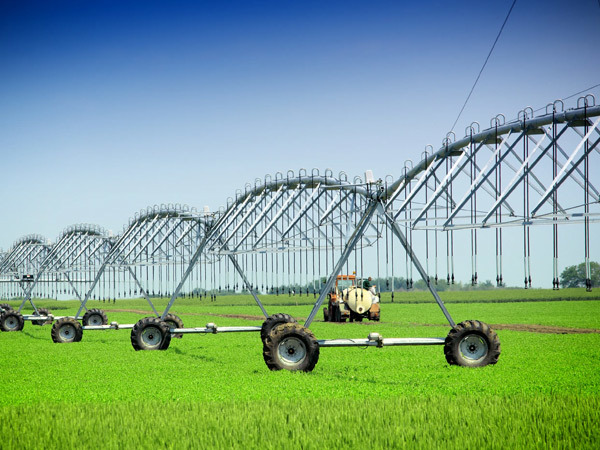Maximizing Crop Yields with Center Pivot Irrigation Machines: The Ultimate Guide
Release time:
Sep 22,2025
Maximizing Crop Yields with Center Pivot Irrigation Machines: The Ultimate Guide Table of Contents 1. Understanding Center Pivot Irrigation 2. How Center Pivot Irrigation Machines Operate 3. Key Components of Center Pivot Irrigation Systems 4. Advantages of Using Center Pivot Irrigation Machines 5. Factors Influencing Crop Yields in Center Pivot Systems 5.1 Soil Type and Quality 5.2 Crop Selection
Maximizing Crop Yields with Center Pivot Irrigation Machines: The Ultimate Guide
Table of Contents
1. Understanding Center Pivot Irrigation
2. How Center Pivot Irrigation Machines Operate
3. Key Components of Center Pivot Irrigation Systems
4. Advantages of Using Center Pivot Irrigation Machines
5. Factors Influencing Crop Yields in Center Pivot Systems
5.1 Soil Type and Quality
5.2 Crop Selection
5.3 Climate and Weather Conditions
6. Best Practices for Implementing Center Pivot Irrigation
6.1 Regular Maintenance and Checks
6.2 Efficient Water Management Strategies
7. Case Studies: Successful Implementation of Center Pivot Irrigation
8. Frequently Asked Questions (FAQs)
9. Conclusion
1. Understanding Center Pivot Irrigation
Center pivot irrigation is a revolutionary farming method that allows for efficient and uniform water application across large agricultural fields. This system uses a rotating set of pipes mounted on wheeled towers that move in a circular pattern, delivering water directly to the crops below. The technology not only improves water efficiency but also optimizes crop growth and yield.
2. How Center Pivot Irrigation Machines Operate
Center pivot irrigation machines operate on a straightforward yet effective principle. The system is centered on a pivot point, typically located at the edge of a field. As the structure rotates around this pivot, water is applied through a series of nozzles positioned throughout the length of the pipeline. This method ensures that each section of the field receives adequate moisture, promoting healthy crop growth.
3. Key Components of Center Pivot Irrigation Systems
Understanding the components of center pivot irrigation machines is crucial for maximizing their effectiveness. Below are the primary parts of a center pivot system:
3.1 Pivot Point
The pivot point serves as the anchor from which the entire system rotates. It is equipped with a water supply line that delivers water to the nozzles.
3.2 Tower Structure
The towers are the support system that holds the pipes above the ground. Their design allows for mobility while withstanding various environmental conditions.
3.3 Water Application Nozzles
These nozzles are strategically placed along the pipeline to ensure an even distribution of water across the field.
4. Advantages of Using Center Pivot Irrigation Machines
The advantages of center pivot irrigation are numerous, making it an attractive choice for farmers looking to enhance productivity and sustainability. Here are some key benefits:
4.1 Enhanced Water Efficiency
Center pivot systems use up to 30% less water compared to traditional irrigation methods, significantly reducing water waste.
4.2 Improved Crop Yields
With precise water delivery, crops receive the hydration they need for optimal growth, resulting in higher yields.
4.3 Labor Savings
The automated nature of center pivot irrigation reduces the need for manual labor, allowing farmers to allocate resources more effectively.
4.4 Adaptability
These systems can be easily adapted to different field shapes and sizes, making them versatile for various agricultural setups.
5. Factors Influencing Crop Yields in Center Pivot Systems
While center pivot irrigation can significantly boost crop yields, several factors can influence the results. Understanding these factors is essential for successful implementation.
5.1 Soil Type and Quality
The type and quality of soil play a critical role in how effectively water is absorbed and retained. Clay soils, for instance, may retain moisture better than sandy soils.
5.2 Crop Selection
Different crops have varying water requirements. Selecting the right crops for the specific moisture levels provided by the irrigation system is crucial for maximizing yield.
5.3 Climate and Weather Conditions
External factors such as temperature, humidity, and rainfall can all impact how well center pivot irrigation performs. Farmers must consider these elements when planning their irrigation schedules.
6. Best Practices for Implementing Center Pivot Irrigation
To get the most out of center pivot irrigation, it’s essential to follow best practices that enhance system performance and crop yield.
6.1 Regular Maintenance and Checks
Routine inspections and maintenance of the equipment are vital to ensure that all components are functioning correctly. This includes checking for leaks, ensuring proper nozzle function, and addressing any mechanical issues promptly.
6.2 Efficient Water Management Strategies
Developing an effective water management strategy can help optimize water usage. This includes scheduling irrigation based on weather forecasts, soil moisture levels, and crop needs.
7. Case Studies: Successful Implementation of Center Pivot Irrigation
Numerous farmers have successfully integrated center pivot irrigation systems into their operations, leading to impressive crop yields. For example, a farm in the Midwest reported a 20% increase in corn yield after installing a state-of-the-art center pivot system. This success story illustrates how optimizing irrigation can lead to substantial agricultural advancements.
8. Frequently Asked Questions (FAQs)
Q1: What is the average lifespan of a center pivot irrigation system?
A1: Most center pivot systems can last between 15 to 20 years with proper maintenance and regular checks.
Q2: How much water does a center pivot system use compared to traditional methods?
A2: Center pivot systems use approximately 30% less water than traditional flood irrigation methods, making them more efficient.
Q3: Can center pivot systems be retrofitted to older irrigation setups?
A3: Yes, many older irrigation systems can be retrofitted to accommodate center pivot technology, enhancing their effectiveness.
Q4: Are there specific crops that benefit more from center pivot irrigation?
A4: Center pivot irrigation is particularly beneficial for water-sensitive crops such as corn, soybeans, and alfalfa.
Q5: What factors should be considered when choosing a center pivot irrigation system?
A5: Key factors include field size, crop type, water source, and soil characteristics.
9. Conclusion
Center pivot irrigation machines represent a significant advancement in agricultural technology, allowing farmers to maximize crop yields while conserving water and reducing labor costs. By understanding the mechanics, advantages, and best practices associated with these systems, farmers can adopt a more efficient and productive approach to agriculture. With the right implementation and attention to detail, center pivot irrigation can transform farming operations, leading to sustainable growth and increased profitability.
Investing in a center pivot irrigation system is not just about enhancing yield; it's about paving the way for a sustainable agricultural future. Embrace this technology to ensure your crops thrive, and watch your agricultural output soar.
Learn more about industry dynamics
New customers enjoy 10% product discount
PRODUCT CENTER
CONTACT US
Address: 2-1-2301, Phoenix International Plaza, High-tech Zone, Jinan City, Shandong Province
Quality of service to win customer satisfaction


Shandong Yihe Agricultural Technology Co., Ltd.




